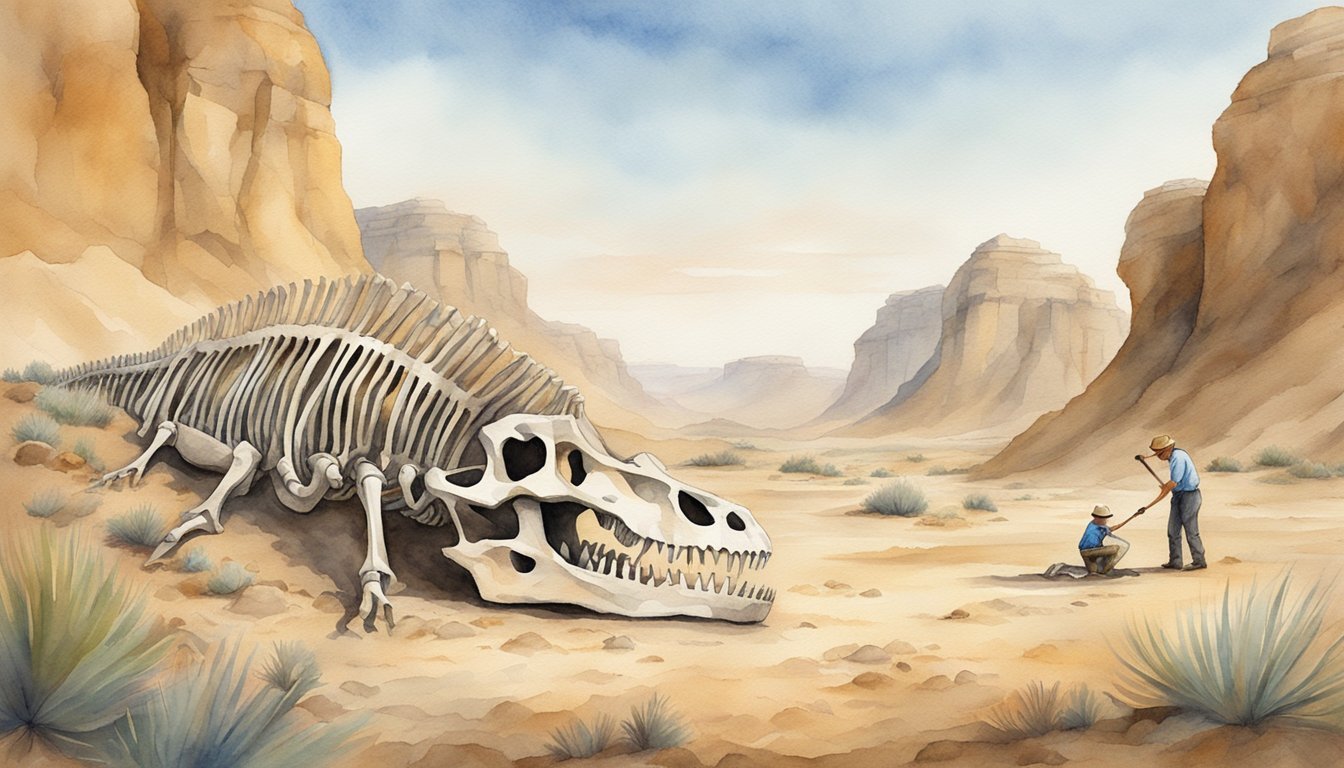Discovery Overview

The discovery of a new dinosaur species is always an exciting event, captivating the attention of both the scientific community and the public. These finds contribute immensely to understanding the rich tapestry of life that existed millions of years ago.
Unearthing the Fossils
The first step in adding a new dinosaur to the scientific records is the excavation of fossils. These ancient remains, most often found embedded in rock, are typically unearthed by paleontologists during careful fieldwork. For example, significant dinosaur fossils have been found in places like Asia and North America, where sediments from different geological periods have preserved the bones very well.
New Species Identification
Once the fossils are uncovered, the challenging work begins: determining if they belong to a new species. This includes a meticulous analysis of the bones, often comprising comparisons with existing dinosaur classifications documented in scientific reports. The identification process can reshape understandings of dinosaur evolution, as each new species provides insights into the diverse forms of life that once roamed the Earth.
Scientific Significance

The discovery of a new dinosaur species offers a profound glimpse into the ancient world, revealing aspects of the origin and evolution of these magnificent creatures. By piecing together the remnants of their past, scientists can unravel the mysteries of dinosaur diversity and behavior, casting new light on the intricate tapestry of life that once roamed the Earth.
Evolutionary Impacts
The latest findings on herbivorous dinosaurs, particularly sauropods, from the Early to Late Cretaceous period underscore their evolutionary significance. These gentle giants, characterized by their long necks and tails, are quintessential icons of the Mesozoic era and serve as a pivotal point for understanding vertebrate evolution. The recent excavation of a herbivorous dinosaur specimen furthers knowledge of how these dinosaurs adapted to a changing environment and competed for resources.
Discoveries of new species enrich the understanding of dinosaur diversity, offering insights into the environmental pressures that shaped their evolution. From the varied anatomical features indicative of different feeding strategies to the evidence of social behavior, the continued study of these prehistoric vertebrates is crucial. It’s not merely about unearthing bones; it’s about connecting to a lineage that has influenced the current biodiversity on this planet.
In particular, the origin and advancement of sauropods during the Early Cretaceous have implications for the understanding of continental separation and the resultant evolutionary paths. As floating titans among the Late Cretaceous fauna, sauropods offer a narrative on how some of the largest land animals ever managed to thrive, and their ultimate decline begs questions about extinction events and habitat loss.
Each new discovery adds a piece to the ancient puzzle, helping to illustrate a world that, while starkly different from today’s, also shares many links to the vertebrates currently inhabiting our planet. This ongoing dialogue between past and present continues to captivate and educate, as each fossil represents a story millions of years in the making.
Contextual Details

In unveiling the details of the newly discovered dinosaur, it’s pivotal to explore how it compares to its prehistoric counterparts and the environmental aspects that may have shaped its evolution.
Comparison With Other Dinosaurs
The newly discovered dinosaur, belonging to the diverse Cretaceous period, exhibits distinct features that both contrast with and echo traits from various well-known species. For example, while the Tyrannosaurus rex reigned supreme as a fearsome predator, this new species presents a fusion of traits seen in both predators like Spinosaurus and armored herbivores like Ankylosaur. It stands out with a unique bone structure not yet seen in other dinosaurs, hinting at a possible unknown lineage.
Environmental Adaptation
Cretaceous habitats were complex ecosystems where dinosaurs like Hadrosaurs and Troodon thrived. Encapsulated in the fossils of this new species are tell-tale signs of adaptability—strong limbs perhaps indicating a semi-aquatic lifestyle akin to that of Spinosaurus, yet possessing beak-like features suggesting a diet of plants or small lizards and mammals. Such versatile traits point toward an extraordinary capability for environmental adaptation, whether in dense forests or along riverbanks teeming with life.

